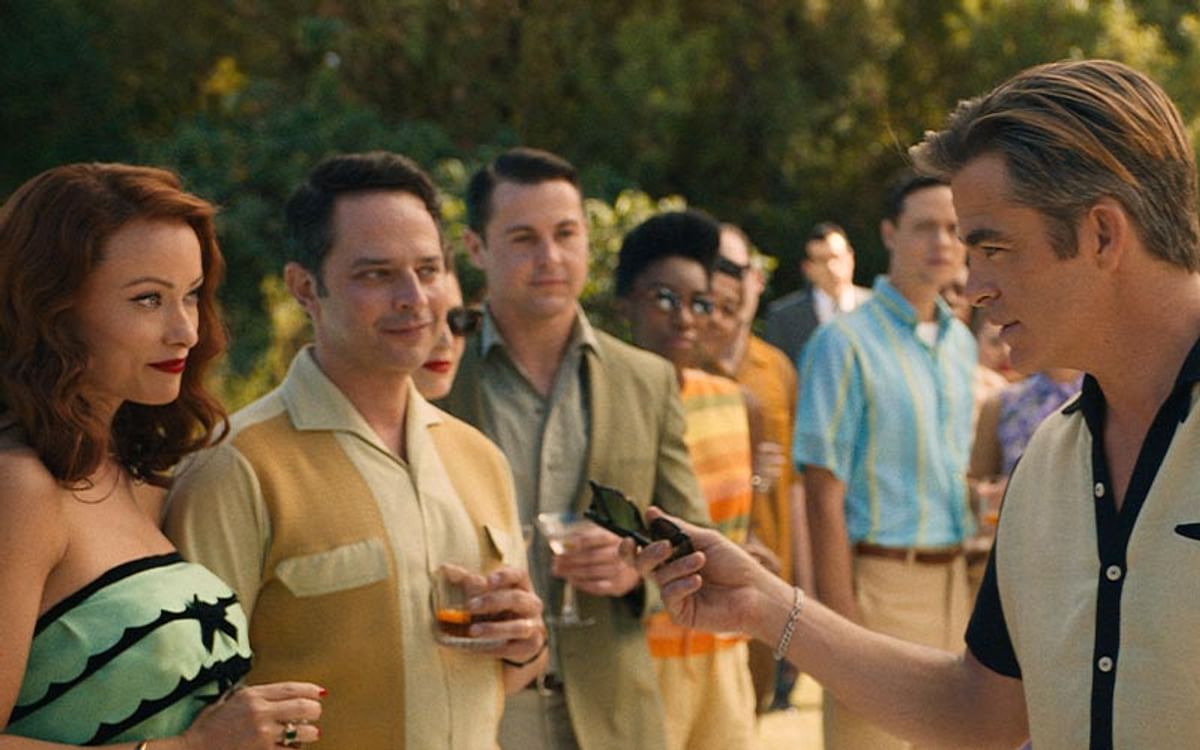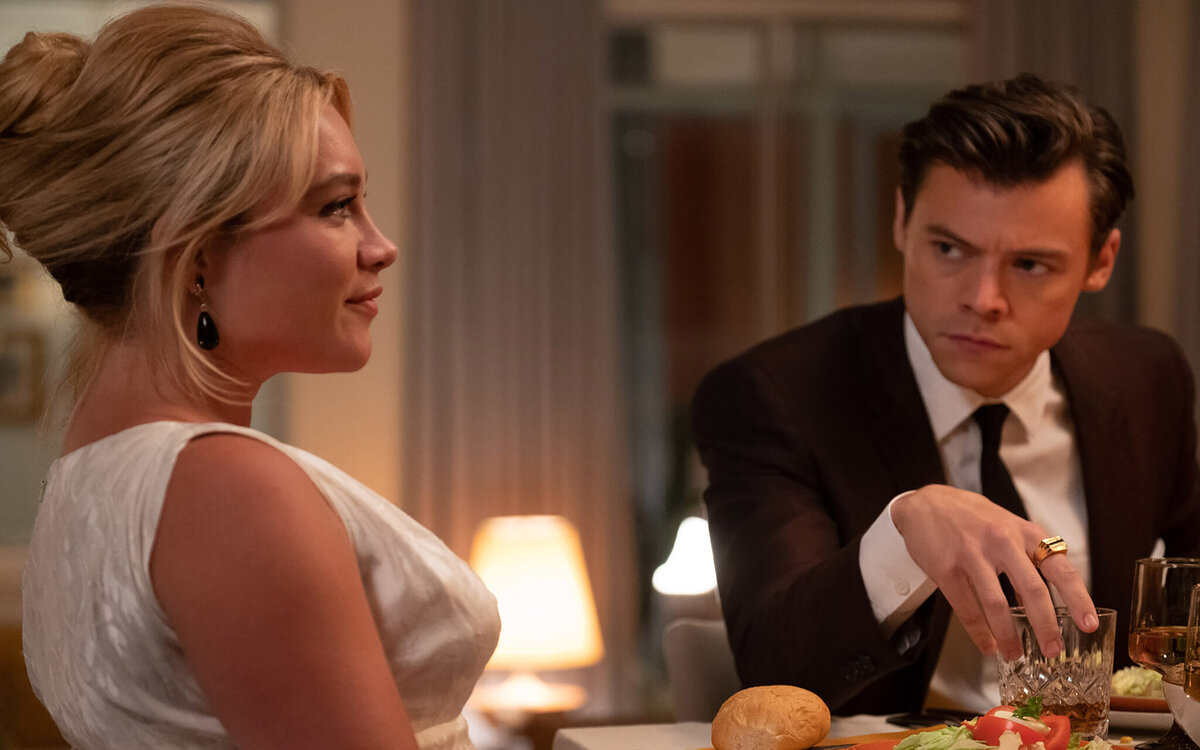In the world of cinema, certain films can generate buzz that transcends the silver screen. Olivia Wilde’s “Don’t Worry Darling” was one such movie, dominating headlines with its behind-the-scenes drama, star-studded cast, and tantalizing plot. Despite receiving mixed reviews upon its theatrical release, the film grossed an impressive $87 million worldwide. Now available for streaming on both HBO Max and Netflix, it’s an opportune moment to revisit this controversial cinematic creation.
Unveiling the Plot: What Is ‘Don’t Worry Darling’ About?
Set against the backdrop of the serene 1950s, “Don’t Worry Darling” delves into the lives of Alice (Florence Pugh) and Jack (Harry Styles), residents of the seemingly perfect Victory community. Men like Jack leave for work each day, leaving their wives to manage domestic affairs. However, as Alice starts noticing unsettling anomalies, her perception of reality begins to crumble. At the center of her doubts is Frank (Chris Pine), the enigmatic leader of the Victory Project.
As Alice delves deeper into the mystery shrouding her utopian life, the film leads us towards a significant twist. It unravels a complex narrative within a simulation, where men consign their wives to a virtual reality while they work in the real world. The film’s grand reveal prompts questions about the plausibility of the story and the fate of its characters.
Unmasking the Big Twist: ‘Don’t Worry Darling’s’ Intriguing Revelation
In a series of flashbacks, the true nature of Alice’s reality is unveiled. In the real world, she is a hardworking surgeon, burdened by the demands of her job, which strains her relationship with Jack. Jack, in stark contrast to his Victory persona, appears unemployed, perpetually online, and disheveled. His transformation hints at a character overwhelmed by his own insecurities.
see more : ‘Star Wars’: What Is the Old Republic Era?
Frustrated with Alice’s busy schedule and seeking solace in a podcast hosted by Frank (in the real world), Jack becomes entangled in Frank’s cultish Victory Project. He subjects Alice to a simulated existence where she becomes the ideal wife, while in the real world, she remains comatose, cared for by her captor.
As Alice confronts Jack in their simulated home, a deadly altercation unfolds, leading to her escape from the simulated reality. However, in this cinematic world, death within the simulation spells real-life consequences. Alice’s flight to freedom is fraught with tension as she battles against Victory’s security forces. The film concludes with an assumed ending, where Alice is heard gasping for air, suggesting her emergence into a safer, real-world existence. Yet, it leaves the audience with numerous unresolved questions and a sense of unfulfilled closure.
The Art of Assumed Endings: When They Work and When They Don’t
Assumed endings in cinema can be a powerful narrative tool, offering audiences a chance to interpret and theorize about a story’s conclusion. When executed effectively, they provide a sense of closure while inviting discussion and speculation.
Movies like “Inception” and “Prisoners” skillfully employ assumed endings. In “Inception,” the iconic spinning top leaves viewers pondering whether it falls or continues to spin, allowing for personal interpretations. “Prisoners” concludes with a scene that hints at resolution but doesn’t explicitly confirm it, leaving certain aspects open to interpretation.
‘Don’t Worry Darling’: An Unfulfilled Assumed Ending
see more : ‘Harry Potter’: Horcruxes and You, a Guide to Splitting Your Soul Through Murder
However, “Don’t Worry Darling” falls short in its use of an assumed ending. While it attempts to conclude with a sense of anticipation and intrigue, it stumbles due to a lack of closure. The film introduces multiple plot holes and loose ends that it neglects to tie up.
Crucially, it fails to provide sufficient background regarding the real-world context, leaving audiences with unanswered questions about Alice’s fate outside the simulation. How did Jack manage to abduct her from her job without consequences? What role does Frank play in the real world, and how did he oversee the Victory Project without raising suspicion?
Moreover, the film concentrates so heavily on Alice’s escape from Victory that it neglects to develop the real-world narrative adequately. It leaves viewers in the dark about Alice’s immediate challenges upon her awakening in reality, overlooking the potential for a richer and more satisfying conclusion.
In essence, “Don’t Worry Darling” leaves its audience with a multitude of unresolved issues and a sense of incompleteness. While the assumed ending is meant to evoke intrigue, it ultimately falls short, failing to provide the closure and satisfaction that well-crafted assumed endings are known for.
In summary, “Don’t Worry Darling” tantalizes with its premise but leaves too many questions unanswered, resulting in an assumed ending that lacks the impact and fulfillment expected from such narrative devices. The film’s potential is undermined by its inability to address the complexities of both its simulated and real-world narratives, leaving viewers with a sense of narrative dissatisfaction as the credits roll.
Source: https://dominioncinemas.net
Category: MOVIE FEATURES













